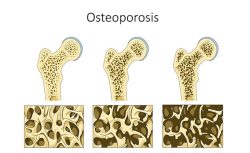My mother was diagnosed with cancer when I was in high school, and her prognosis did not look good. Though there were many factors that attributed to the disease, from genetics to stress, she was the first one to point out to me the potential impact the environment may have had on her health.
After all these years, one particular conversation I had with her stands out in my mind: We were walking around our neighborhood when she stopped and asked, “Do you see that?” She was pointing at the roofs of the houses. “The sides of the roofs facing the freeway are covered in soot and are much darker than those facing away from the freeway.” She paused in thought for a moment and continued, “If the exhaust from the freeway is doing that to our roofs, imagine what it’s doing to our bodies.” She then began naming all the neighbors that had been diagnosed with cancer – my mother was certain there was a correlation between our neighborhood’s health and our proximity to the freeway. She was onto something.
The 2010 Global Study of Disease recently ranked air pollution, referred to as “ambient particulate matter pollution,” as the seventh leading risk factor for disease worldwide. Air pollution is now ranked much higher as a risk factor than in previous years, which may be a result of advances in science: rather than presuming air pollution just affects big cities, high-resolution satellite data and chemical transport models allow researchers to determine air pollution levels in both urban and rural areas alike.
Now researchers realize that air pollution accounts for a large burden of disease, contributing to 3.2 million deaths in 2010. It’s no wonder that the authors of the study felt it emphasized the need to “implement more stringent regulation on vehicle and industrial emissions, reduce agricultural burning or land clearing by fire, and curb and reverse deforestation and desertification to reduce ambient particulate matter from dust.” Reducing air pollution would decrease disease and reduce the incidences of death.
Though a large majority of those impacted by air pollution lived in densely populated cities, such as China, residents of the United States are by no means in the clear air.
A study published in the American Journal of Epidemiology conducted research a little closer to home – in the San Joaquin Valley in California. In this study, researchers sought to determine whether air pollution and traffic exposure increased the risk of birth defects. Unfortunately, signs point to yes.
Mothers exposed to higher levels of carbon monoxide and nitrogen oxide (traffic-related air pollutants) during the first 2 months of pregnancy were almost twice as likely to give birth to children with neural tube defects, or defects of the brain and spinal cord. The San Joaquin Valley is just one of many highly polluted regions in the United States, and the study clearly demonstrates an association between traffic pollutants and birth defects.
Recognizing that air pollution greatly affects our health and well-being is the first step. Pushing for a cleaner environment is the second. Veerabhadran Ramanathan, Director of the Center for Atmospheric Sciences at the Scripps Institution of Oceanography, recently spoke at the Climate Justice Forum on April 11th, recognizing the relation between small particulate pollution and pulmonary and heart disease, effects that are exacerbated in infants and the elderly. But he also pointed out that such pollutants can be reduced. Black carbon, a powerful pollutant, has been reduced by 50% in California, just from stricter diesel regulation.
Environmental regulation can significantly reduce pollutants and improve public health, which doesn’t just affect far away nations – it affects us all. My mother intended to relocate but was never able to; she died the summer before my first year of college. Most of us aren’t in a position to move from polluted areas, so we need to vocalize our concerns, vote for those who are looking out for our best interests and public health interests, and ensure we can all breathe in the clean air.




















